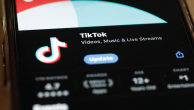
In 1998, fewer than half of Americans said they had a home computer. Few logged on to the internet and if they did, they used a slow-moving dial-up modem. Today, far more people have access to high-speed internet connections in their homes than had a home computer a decade ago (58% vs. 43%).
This just one of the ways that new and evolving technologies are changing the way people get the news. Expanded use of high-speed computers and home broadband are opening the door to more and better quality news videos, which a third of Americans watch at least on an occasional basis.
The explosion in cell phone ownership since the mid-1990s has not had much of an impact on the public’s news consumption; relatively few get news using these phones. But the next generation of phones – iPhones and Blackberries – are now widely used for news. More than a third of smart phone owners (37%) get news from these devices.
In addition, a small minority of the rising number of owners of iPods and other MP3 players say they watch or listen to news podcasts on these devices. Nearly one-in-ten owners of iPods or MP3 players (8%) say they watch or listen to podcasts using these devices.
Cell Phone Growth Advances

Fully 83% of Americans say they have a cell phone, up from 74% two years ago. In 2000, only about half of Americans (53%) said they have a cell phone. The growth in cell phone use has occurred across all age categories – but the increase over the past two years has been particularly striking among those in their 70s.
Currently, 69% of those in their 70s say they have a cell phone, up from 55% in 2006; in 2000, only about a quarter of those in their 70s said they had a cell phone. Cell phone use among the youngest respondents also has increased markedly since 2006 (from 75% to 86%).
Smart Phone Users: More Connected
By comparison, the growth of smart phones has been far less impressive: 15% currently say they have a Blackberry, iPhone or similar device compared with 12% in 2006 and 14% in 2004. While the demographic profile of cell phone users has come to more closely resemble that of the general public, smart phone use remains dominated by the highly educated and well off.

Nearly four-in-ten (37%) of those with family incomes of at least $150,000 say they have smart phones, compared with fewer than half as many in lower income categories. A quarter of college graduates have smart phones; just 11% of those with no more than a high school education have an iPhone, Blackberry or similar phone.
Notably, far more owners of smart phones than cell phones use the devices to get the news; 37% of smart phone owners do this, compared with just 4% of cell phone owners. Owners of smart phones also stand out for their heavy news consumption, particularly news online. Roughly three-in-ten (31%) say they check in on the news several times a day, compared with 23% of cell phone users. And nearly half (45%) say they got any news online yesterday, while 29% of cell phone users got news from the web the previous day.
Needing the News for Work

Three-in-ten workers say that keeping up with the news is important for their job, which is little changed from 2006 (35%) and 2004 (31%). As in the past, highly educated and high-income workers are far more likely than those with less education and lower incomes to say that it is important for their job to keep up with the news.
Nearly half (47%) of workers with a post-graduate degree say that being up on the news is important for their job, more than double the percentage of those with no more than a high school education. More than four-in-ten workers (45%) with family incomes of at least $100,000 say following the news is important for work, compared with smaller percentages of those in lower income categories.

Workers who need to follow the news for work are heavier news consumers – and enjoy getting the news more – than workers for whom keeping up with the news as not an important part of their job. Those who need to keep up for their jobs are more likely to get news at various points throughout the day.
In addition, those with jobs that require them to stay current are somewhat more likely to use the web for news: 44% report going online for news every day, compared with a third (33%) of those who don’t follow the news for work. And 61% of workers who need to keep up with the news for their jobs say they enjoy getting the news a lot; that compares with just 45% of those for whom keeping up is not important.




